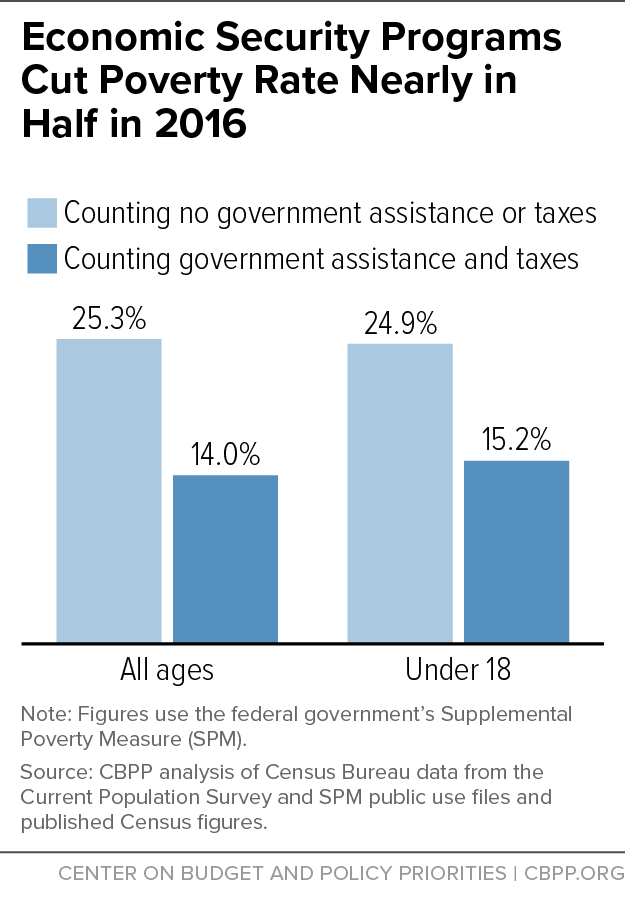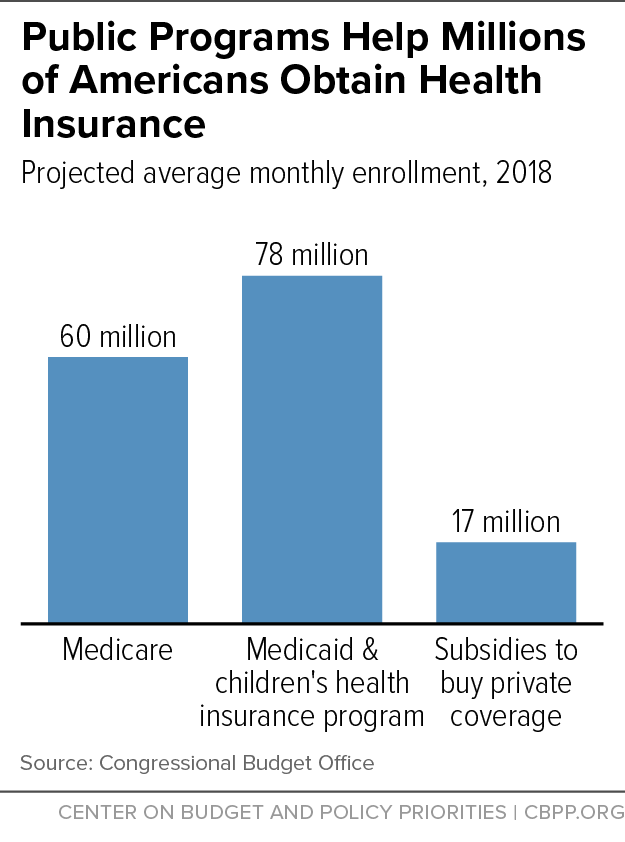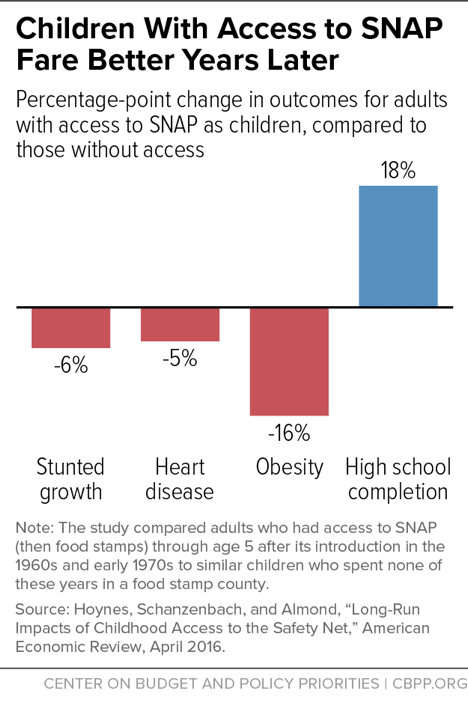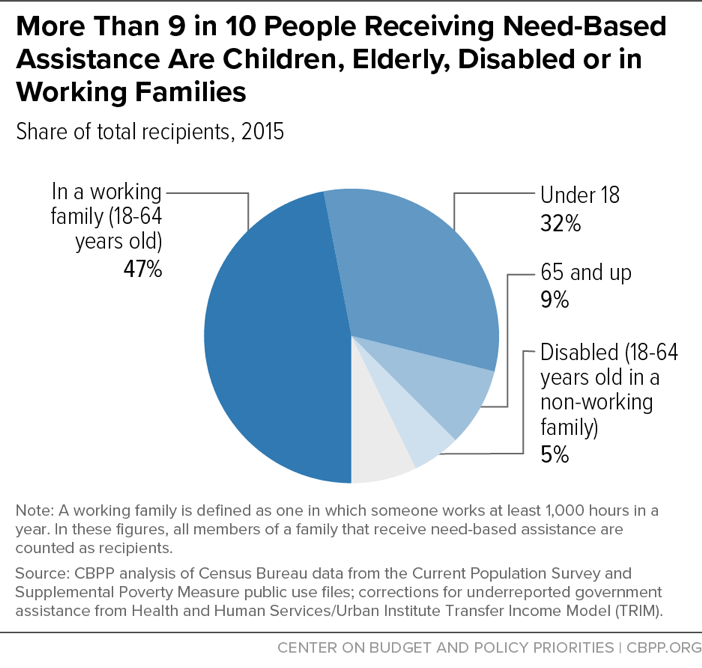BEYOND THE NUMBERS
Economic Security, Health Programs Reduce Poverty and Hardship, With Long-Term Benefits
Update, March 22: We’ve replaced the final graphic in this post with an updated version from our chart book.
In his 2018 budget, President Trump called for unprecedented cuts in programs for low- and moderate-income families. With the President set to release his 2019 budget on Monday, lawmakers need to keep this in mind: today’s economic security programs keep tens of millions of Americans above the poverty line and have positive longer-term effects on children, helping them do better (and go further) in school and lift their earning power as adults. These four graphs give some facts about how these programs help millions of Americans live healthier, more secure lives:
- Economic security programs are effective against poverty. These programs (i.e., the safety net of government assistance policies) lifted 36 million people above the poverty line in 2016, including more than 7 million children, we calculate using the federal government’s Supplemental Poverty Measure. Government benefits and taxes cut the poverty rate from 25.3 percent to 14.0 percent that year; among children, they cut the poverty rate from 24.9 percent to 15.2 percent.

- Public programs provide health coverage to millions of seniors and low-income people. Medicare and Medicaid cover millions of seniors, people with disabilities, parents, children, and — in states that adopt the Affordable Care Act’s (ACA) Medicaid expansion — childless adults with incomes up to 138 percent of the poverty line. The ACA also provides near-poor and moderate-income people with subsidies to buy private coverage through insurance marketplaces. Thanks to the ACA, the share of Americans without health insurance fell to a historic low in 2016. The ACA’s Medicaid expansion has produced not only historic health coverage gains but other far-reaching positive effects, a large and growing body of research finds.
- Economic security programs provide long-term benefits. Many research studies have found that low-income children whose families participate in these programs achieve lasting improvements in education, health, and other outcomes. For example, a study of what happened when food stamps (now called SNAP) gradually expanded nationwide in the 1960s and early 1970s found that disadvantaged children who had access to food stamps in early childhood and whose mothers had access during pregnancy had better health and educational outcomes as adults than children who didn’t have access to food stamps.
- Need-based government assistance goes almost entirely to children, the elderly, people with disabilities, and working families. Need-based programs are those limited to people with low or modest incomes. Examples include SNAP, Supplemental Security Income, housing assistance, Temporary Assistance for Needy Families, and the Earned Income Tax Credit.
Most non-elderly adults who aren’t receiving disability benefits and participate in programs like Medicaid or SNAP are working — and many of those who aren’t working currently are between jobs and will work soon. Of those who aren’t working, many are ill, caring for a family member who is ill or has a disability, or face other circumstances that make it difficult to work in the near term.
Economic security programs help millions of working families make ends meet and are structured so that families are usually better off when an adult can start working, work more hours, or receive a wage hike.



